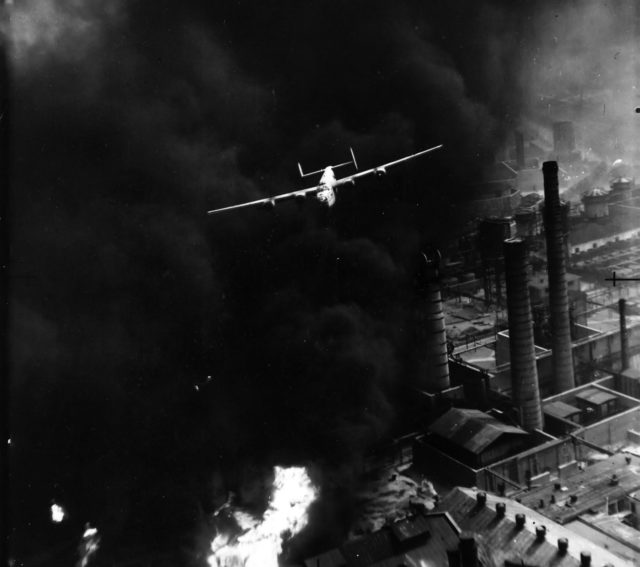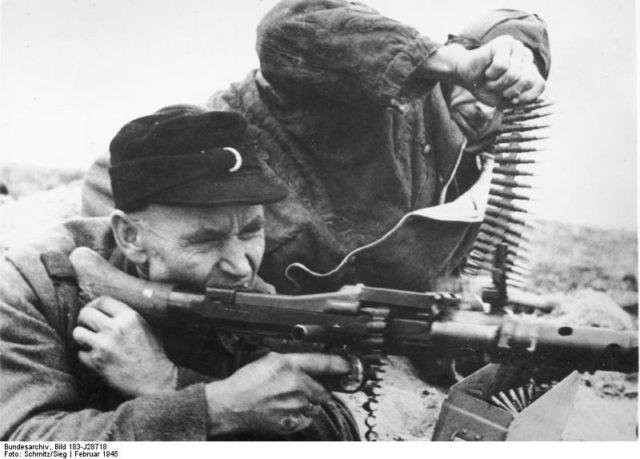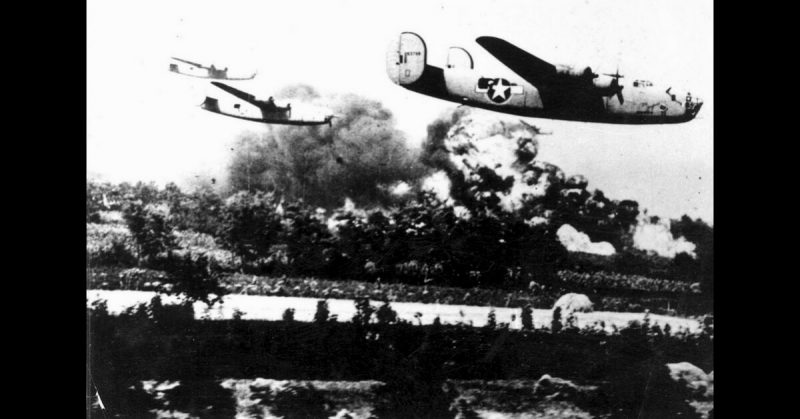WWII was a war between industries as much as it was between nations. From tanks and planes to bullets and bombs, the materials of war needed to be produced to keep countries fighting.
A vital part of the Allied strategy was therefore to cripple Germany’s military industry.
A Loose Noose
The Allies had one advantage over the Germans, the sea.
Ocean transport was by far the most efficient means of transporting large volumes of raw resources. Rubber, oil, steel, coal and a hundred other products were important in producing ammunition and military vehicles. These came from all over the world.
Britain had the edge in both sources and transport. British colonies supplied the resources not produced at home. The island nation was well placed to bring materials in by sea and had developed an excellent Merchant Navy.
Germany, on the other hand, had few colonies. It also had difficulty in reaching the rest of the world. Ships leaving German ports had to pass around Britain to get to the Atlantic, making them vulnerable to the Royal Navy.

German supply lines were extended through Italy and across the Mediterranean, but there the British struck again. Having decrypted the Nazi’s crucial Enigma codes, they were able to target transports in the Mediterranean more accurately.
However, they did not have a complete stranglehold on German industry. The Nazis’ successful invasion of Norway gave the Reich access to the Atlantic. It ensured Germany could continue sourcing timber and high-grade steel from neutral Sweden. Britain’s attempt to counter it led to defeat and retreat.
Initial attempts to starve German industry failed. More direct methods were needed.
Bombing
For several years, strikes against German industry were limited to bombing raids. The Royal Air Force (RAF) Bomber Command’s whole strategy was based on sending wave after wave of planes to target German industry. They believed that bombing alone could knock Germany out of the war.
Unfortunately for the RAF, the results were far from convincing. As aerial intelligence improved, it showed that bombing was doing little to harm German production.
Bomber Command would not listen. Together with American and other Allied planes, they continued to pound German cities in the hope of bringing production to a standstill.
The belief in the effectiveness of bombing German industry persisted throughout the war and beyond. The Allies put an enormous amount of effort into it. However, until late in the war, the bombing was neither accurate enough nor overwhelming enough to make a serious dent. German industry did not go onto a war footing until 1943.
Patton on the Saar
Following the D-Day landings in June 1944 and the liberation of France, the Western Allies turned their forces to trying to crush German industry. It involved focusing on two regions in particular; the military industrial complexes along the Ruhr and the Saar.
General Patton made the most swiftly successful attempt along the Saar. He was the perfect choice for such an offensive – aggressive, unrelenting, and with flashes of tactical brilliance.
Patton attacked the Saar industries with the sort of fast-moving tank offensive that characterized his way of fighting. Although he had had free range to maneuver in France, now he faced difficult terrain and well-established enemy defenses.
Heading toward the Saar factories in September 1944, Patton was faced with a river crossing and an entrenched enemy as part of the heavily defended Siegfried line. Instead of a direct assault, he maneuvered around Metz allowing his troops to isolate a strong defensive position and force its surrender.
By the end of the year, Patton was smashing one of the great industrial regions of the Reich.

The Russians in Silesia
As 1945 dawned, the Russians were making a similar advance into Silesia.
That part of Europe had changed hands several times over the centuries, shifting between German and Polish control. It gained added importance in the 20th century due to the discovery of oil in the region. It was one of the Nazi’s main sources of fuel.
Throughout the war, the Allies had aimed to cut off oil supplies from Silesia. Again bombers had been used, but as with the strikes against other enemy industry, they were less effective than had been hoped.
A Russian invasion was another matter. The Lower Silesian Offensive of February 1945 was followed by the Upper Silesian Offensive a month later. These took vital resources out of German hands. They also cut off underground industrial and research facilities the Germans had built in the region, designed to make use of slave labor from prison camps and the area’s abundant mineral resources.
The Ruhr
The other key industrial region, the Ruhr, proved harder to crack. Despite the determined efforts of the US First and Ninth Armies, the Germans clung to their industrial heartland. It was not until March/April 1945, as the Allies swept around from north and south that German forces in the Ruhr Pocket were defeated.
Isolating the Ruhr region had undoubtedly helped to reduce its contribution to the might of the Reich, but by the time it fell, the war was almost over.
The Allies won the economic war by out-producing Germany. Their efforts to directly smash German industry had only limited effect until the last year of the war. When they came, they came decisively in the Saar and Silesia, ensuring the Nazis lacked the supplies to fight on.
Source:
Ralph Bennett (1999), Behind the Battle: Intelligence in the War with Germany 1939-1945.
David Rooney (1999), Military Mavericks: Extraordinary Men of Battle.
